#domestic fox
Text
thinking about mechta (dream) the first of the domesticated foxes to have floppy ears
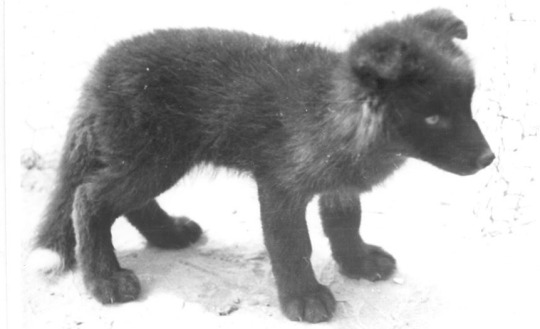
“In 1969, the 10th generation of foxes was born, and among them was a pup that she named Mechta, the Russian word for dream. In wild foxes, a pup’s ears are floppy until it is about two weeks old, at which point its ears take on the ramrod-straight look we tend to picture when we think of foxes. When Mechta was three weeks old, her ears had not yet straightened. They still hadn’t at four weeks, nor at five. Mechta looked exactly like a dog pup.”
#not stamping approval or whatever it’s honestly more unsettling like a horror reveal that the same must’ve happened with wolves#lyudmila trut#fox#foxes#canid#vulpes vulpes#domestic fox#domestication#animals#silver fox#fave
824 notes
·
View notes
Text
ARGONUS FAUNA: treehounds, domestic gray foxes + breeds
(NOTE: descriptions copy-pasted from DA where i normally/originally post my works. any context that is missing here on tumblr can be found on my DA [linked here and on pinned post] )
[this image is actually a recent addition to the roster of fauna, having been posted in july 2023.]
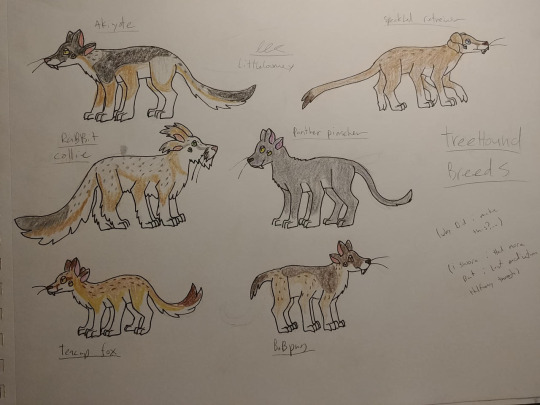
a collection of treehound breeds that i sketched whilst i was out in south carolina visiting family. my god, i have never been surrounded by SO MANY DOGS (four of them total, not including our own dog that we brought with us), which may or may not have been the real inspo for this piece.
so, anyways, i've already drew these guys a long while ago [tumblr post about them is here], but i'll gladly talk about it again.
these guys are treehounds, a domesticated variant (subspecies?) of the planet's gray fox , the smallest amerigian canid (though to us it's the size of a lion). they were one of many attempts by humans to get a dog analog back into their society, and of all the attempts these were (strangely), the most successful. they were one of only a handful of wild animals to have been tamed and domesticated exclusively by human, though their origins on their actual domestication had been lost to time. what is known, however, is that the first domesticated treehound originated from Western Coast Province, and that there were several environmental factors that could've played a role in the taming/domestication. there also exist a sort of local folk tale that explains their origin (but i'll leave that till the end).
anyway, fast forward to modern day, and there exist several breeds of treehounds, all having been bred with specific usages. let's just get into it.
AKIYOTE
one of the least derived breed, yet simultaneously the most widely used by humans. the akiyote is considered the german shepherd of the treehounds; an intelligent and cunning breed, it's a jack-of-all-trades when it comes to the jobs it has.
the akyote originally was created to be a guard fox. but, like the german shepherd, it is often most associated with human law enforcement; search-and-rescue, narcotic detection, tracking, pursuing criminals, etc.. it also is a widely used service animal, and especially with the physically and visually impaired.
the akiyote is a relatively modest-sized breed; they come in varying hues of the typical gray & red colors their wild ancestors have, however they all consistently have a darker-colored head, back and tail tip. usually these dark spots are black in color, though in lighter-colored individuals it could present itself as a darker gray/silver. although a typically friendly and moderately active breed, the akyote needs to be well-socialized and well-train, as they're known to be aggressive towards strangers. however, once properly trained, they're considered an amazing and loyal breed.
SPECKLED RETRIEVER
were the akiyote is a vulpine german shepherd, the speckled retriever is a labrador in a fox's body. much like the lab, they're a "gun-fox", having been initially bred to flush out, find and retrieve game (mainly birds and rabbits). however, like the akiyote, they're a VERY versatile breed; arguable much more than the akiyote.
the speckled retriever had long been used in search-and-rescue, water rescues, and are popular as service animals. as a matter of fact, because of their relatively large size yet very calm and smart temperament, in the human world they are the poster child for service foxes; mobility assistance, guiding, seizure alerting, therapy, autism support, ect. sometimes they're often preferred over other treehound breeds when it comes to service animals.
the speckled retriever is easily recognized for it's floppy ears, short fur, and a near-solid colored coat with a white underside and it's namesake "speckles" that run down it's back. they come in an assortment of colors; red (most popular), gray, silver, tan, chocolate, etc. like said, they are an intelligent yet very calm breed. in spite of their seemingly lithe frame, they're strong swimmers and love to swim just as much as they love to climb. their temperament and easy care makes them popular as family pets, as well as a good beginner breed for those who wish to own treehounds themselves.
RABBIT COLLIE
a strange breed that is popular with freerunners who own ranches/farms, the rabbit collie is an unusual breed with an unusual history to it.
you see, during the initial breed development, they weren't bred by humans, but rather initially bred by the elkinets who wanted to see how effective they were at pest control. this included breeding in wild gray fox DNA into them (similar to how the australian cattle dog is part-dingo), to add extra energy for hunting. however, once a few freerunners got their hands on them, they were then bred further to become not just pest control, but also effective herding foxes. they'd herd typical freerunner livestock like poultry, guinea pigs and rabbits; however, they also were great at flushing (and killing) pest like rats, mice and occasionally house sparrows.
the rabbit collie gets its's name partly because of it's long, wiry hair which makes it's ears look longer than they really are. they're commonly very light in color; silver and light tan being the two main variations. they're one of the smartest breeds of treehound, however they are also a very active breed that needs lots of space and enrichment; not to mention the long fur, which sheds alot and requires quite the upkeep. this makes them the least beginner friendly, though in the correct hands/paws they can be just as good pets.
PANTHER PINSCHER
the panther pinscher initially doesnt even look like a treehound or any known canine; as a matter of fact, it look more like a cat than anything else. but even still, this breed is not one to be messed with.
the panther pinscher is a large breed that was used to fill the role of all the big, heavy working dogs. it's was bred to be used mainly as a guard/watch fox, protecting it's homes from intruders and trespassers. however, it's large size also allows it to do heavy lifting, by pull carts and carrying supplies in specialized harnesses. it's a symbol of strength and intimidation, which makes it a common mascot in many human schools. and one could not forget the controversial (and often illegal) practice of "fox-fighting", where much like pitbulls these guys were the forerunners of.
this breed is well known for it's panther-like appearance (of which they're still debate as to whether this was intentional or not). it's size is more closer to the planet's red foxes (or to us more closer to a liger's size), making it the largest breed of treehound. it's short fur, short face and small ears give it that feline-like look, and only seems to come in solid colors (black, blue and white being common), sometimes having white spots on their legs, chest and tail tip. yet in spite of it's intimidating appearances and initial usages, it has became popular with many families. how? well, as it turns out its a surprisingly well-rounded breed in temperament and care; they're easy to train and easy to socialize, and are rather friendly animals towards children and other pets. if size and local laws on certain breeds isn't your problem when looking for great family pets, then a panther pinscher might just be for you.
TEACUP FOX
the teacup fox is what one would consider the lovechild between a jack russel and a chihuahua in fox form; in direct contrary to the panther pischer, it's the smallest breed out there.
the teacup fox was initially bred to be a kind of pest control; it's tiny sizes allow them to reach spaces that other vermin-hunting breeds couldn't. however, whilst it was effective at it's job, it's small size quickly made them a popular companion animal to those who do not have the space for any other breeds of treehounds. these breeds would later be classified as "minifoxes" of which the teacup fox would be the posterchild for.
the teacup fox comes in many colors and coat lengths, however the main defining trait is it's size; it is no bigger than the planet's chihuahua or pomeranian (closer to a lab/golden retreiver), and it almost looks like a treehound kit itself. although considered an "apartment friendly" breed, it is still an active breed that needs proper exercise and enrichment. it is also a skittish breed, and while quick to bond with it's owner and other house members, they can be rather aloof with strangers. thus, whilst not a bad option, it's still a breed that needs some consideration.
BOBPUG
the bobpug is also a minifox breed, just a little bit bigger than the teacup fox. of all the breed listed here, the bobpug had perhaps the simplest usage.
this fox was bred purely for companionship. more specifically, it was bred to be as smart, calm and friendly as some of the larger treehound breeds, yet be small enough to fit in most homes. bassically, a miniature version of all the big guys listed above, minus size. this wasn't the first breed to have been bred for such reasons, but it's by far the most popular and well-known. they are often the second or third most popular breed to be used as service animals.
the bobpug gets its name from it's short face and naturally short tail (believed to have been unintentional by the breeders). like the teacup fox, it comes in a wide variety of colors and coat lengths; some varieties also have floppy ears like the speckled retriever. however, it is slightly bigger than the teacup fox, and unlike the teacup fox is is a rather calm, smart, easily-trained, and overall a very well-rounded breed. although they get along great with most owners, they're popular with elderly people and families with young kids due to being smaller and more patient.
[tumblr note: this was going to contain a short story attached to the original deviantart post, but this one is already long enough so i'm gonna make a seperate post about that]
#planet argonus#argonus#domesticated#domestication#fox#gaurd dog#gray fox#grey fox#pet#pug#retriever#pet fox#speculative evolution#speculative biology#domestic fox#speculative zoology
11 notes
·
View notes
Video
youtube
Maneki-neko season is now on your streets 🎐 @DenisKorza #positivevibes #...
If you love to live, go out for a walk under the spring sky! 🎋 Forget about the long and dull winter in your gray, joyless world. The atmosphere of a new life with positive transformations is already waiting for you to take your steps, somewhere on one of your spring streets. Excite your consciousness with a stream of new information in the widest possible range! Run along the blossoming alleys, pet cats, play with dogs, smell flowers, give your smile to others! This is your motivation to start moving towards an active and fulfilling life!
For business inquiries: [email protected]
▶️ https://www.youtube.com/playlist?list=PLFfYXAEfRVMPAuCvOrkSE8LZAtflk7LRX
▶️ https://www.youtube.com/playlist?list=PLFfYXAEfRVMNjmS6mCcmqGlcLz6a83gR6
▶️ https://www.youtube.com/playlist?list=PLFfYXAEfRVMNvhXZ6i1UQLTaH2PruH01e
▶️ https://www.youtube.com/playlist?list=PLFfYXAEfRVMMkgHyyPKbaMZLqeOGVETjy
▶️ https://www.youtube.com/playlist?list=PLFfYXAEfRVMMzgxXlEBc3KNYd1xBF2z0p
▶️ https://www.youtube.com/playlist?list=PLFfYXAEfRVMPeqNqqMnoF-M8BLrGOB8og
▶️ https://www.youtube.com/playlist?list=PLFfYXAEfRVMMi492SK-wKU7kCkfBcNRzU
▶️ https://www.youtube.com/playlist?list=PLFfYXAEfRVMMMHdFzxtnVv7Jv0u3uTBdN
https://www.youtube.com/deniskorza 🔰
https://www.instagram.com/korzagru
https://twitter.com/korzagru
https://www.facebook.com/korzagru
#youtube#motivation#running#memories#manekineko#spring#sprint#trail running#fresh#walking#outdoors#peaceofmind#hiking#sports#fox spirit#silver fox#melanistic#talkinng fox#black fox#pet fox#cross fox#arctic fox#red fox#white fox#domestic fox#nine tails#kitsune#deniskorza
0 notes
Photo

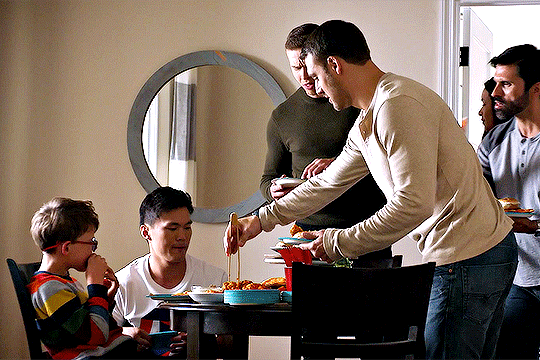






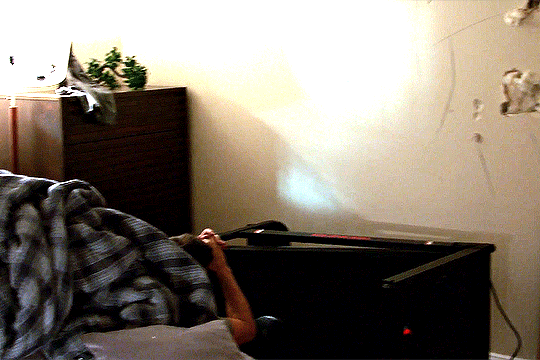

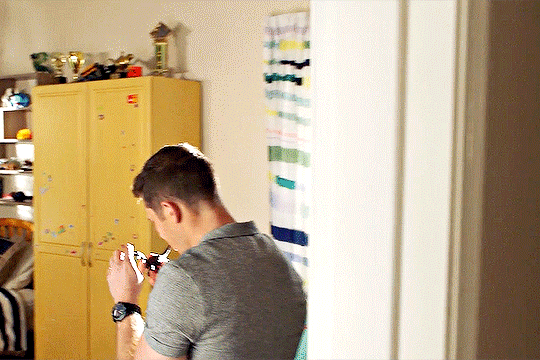


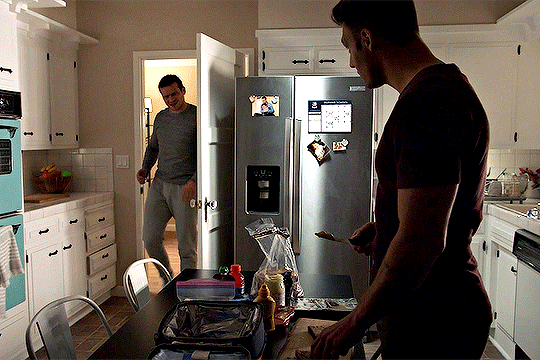
Uh, this is Eddie's house. I'm not really a guest.
#911edit#buddieedit#buddie#911#911 fox#evan buckley#eddie diaz#christopher diaz#userkimmy#useralie#userpickles#userange#usernicolo#usertriz#userisha#userceecee#mine#the domesticity of it all...
7K notes
·
View notes
Text


there we are again in the middle of the night, we’re dancing ‘round the kitchen in the refrigerator light ~ 🎶✨✨
#my art#red white and royal blue#alex claremont diaz#prince henry rwrb#firstprince#digital art#rwrb fanart#rwrb movie#digital painting#prince henry fox mountchristen windsor#taylor swift lyrics referenced#all too well lyrics#taylor swift#i love making domestic kitchen moments i have no life ig 😭🤣
604 notes
·
View notes
Text
buck with taylor: want frozen waffles from the fridge?
buck with his parents: i got takeout!
buck when eddie: hey babe! hi, love of my life! 🤩 i perfectioned this lasagna and it took me three tries but i hope you like it, baby! 🥺 eddie, look! bobby gave me his secret ingredient! do you want me to cook it for you? imma cook it for you. i'll be so good and cook for you all the time. 🥰 just— hi, i know how to cook! eddie, eddie! look, i'm cooking for you! 💍😌👨🏼🍳


#housewife buck#love is truly stored in the kitchen#the intimacy and the domesticity of cooking a meal for your beloved#eddie diaz#evan buckley#buck x eddie#buddie#911onabc#911 on fox#buddie incorrect quotes#911 incorrect quotes
3K notes
·
View notes
Text



i’m never gonna love anybody in the world like i love you.
#red white and royal blue#rwrb fanart#henry fox mountchristen windsor#alex claremont diaz#firstprince#my art#graphics#this turned out way different than i originally envisioned but oh welllll#want to draw some domestic fp next ❤️💙
298 notes
·
View notes
Text


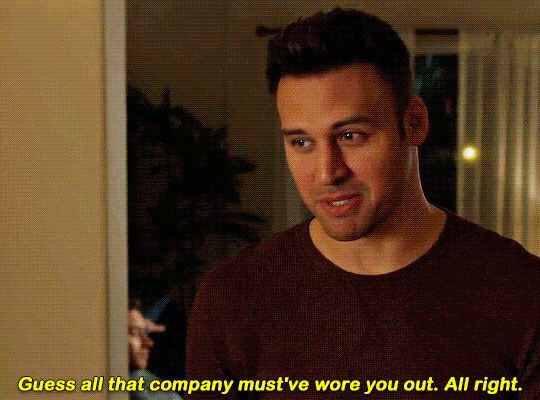







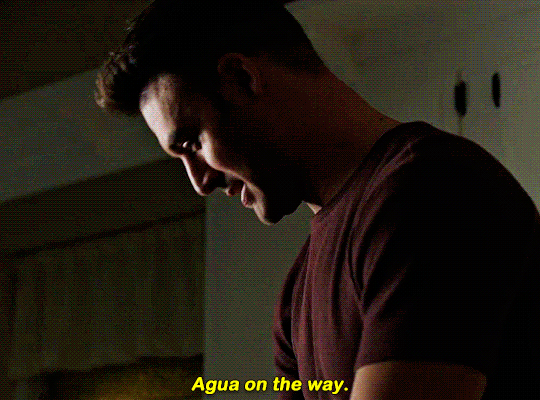




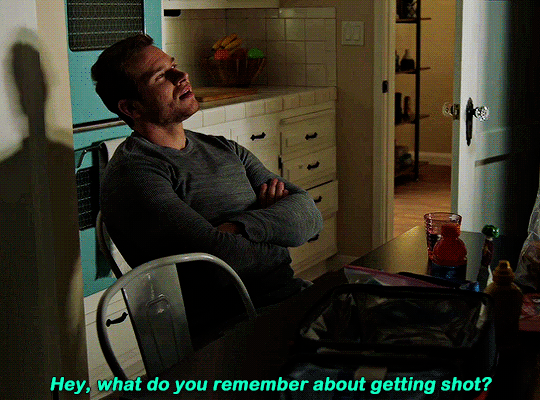











Favorite Buddie Moments Per Episode: 6x12 Recovery
#this is very husbands of them#supportive husband#married#domestic af#insane stuff really#buddie moments#buddie#buck x eddie#eddie x buck#evan buckley#eddie diaz#love#ryan guzman#oliver stark#gif#gifs#gifset#6x12#recovery#911 on fox#911 on abc
638 notes
·
View notes
Text
ANDREW SLEPT WITH HIS BACK TO THE DOOR IN WHEN THEY WERE AT THE CABIN AND NOT ONLY DID HE DO THAT HE ALSO HAD HIS ARM UNDER NEILS PILLOW!
#I’m rereading the cabin scenes and I just realized this#im sobbing#it’s so domestic#aftg#all for the game#the foxhole court#andrew minyard#the foxes#neil josten#andreil#all for the gay
270 notes
·
View notes
Text
It bothers me when people say “cats domesticated themselves”. Yes I guess that’s technically true but it’s only true because Everything domesticated itself.
People nowadays view domestication as this thing humans forced on animals as a way to Dominate Nature or whatever but it’s not. No caveman was out there forcibly typing up a wolf until it learned to love them. Domestication happened because humans and animals were just hanging out in the same places and some of the animals decided they liked being around the humans.
The only exception is maybe plants but we still domesticated the ones that were easy to cultivate and liked the habitats we made for them. It would be next to impossible to truly domesticate something that doesn’t “want” to be domesticated. It requires two willing participants
#if an animal didn’t want to be domesticated it could just leave. like they all were into this#that’s part of why I don’t care for the ‘domesticated foxes’ thing because this IS being forced on them
174 notes
·
View notes
Text




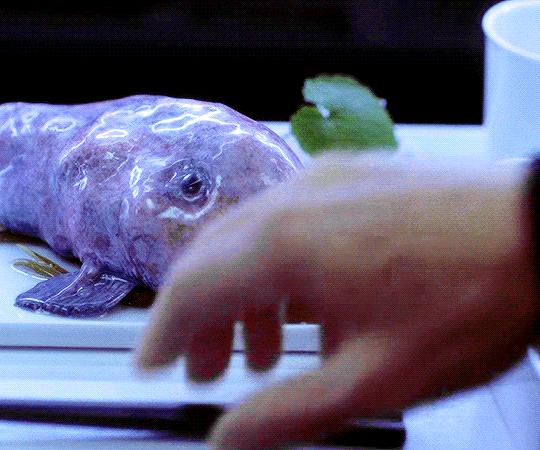
Well, it's good to see you got all your personal devices back. Not all of them.
THE X FILES GIF MEME [9/20] EPISODES
Rm9sbG93ZXJz (11.07)
#the x files#txf#dailytxf#txfedit#xfilesnet#fox mulder#dana scully#txfmeme#memeepisodes#Rm9sbG93ZXJz#11x07#mine#kallypsos#usersilene#my silly goofy s11 pick!!#yeah it makes no sense but tbh this ep gave me everything i wanted from the revival#domestic msr hangin out and gettin into situations together#great episode for the vibes#didn't intend to make a rainbow but here we are!
303 notes
·
View notes
Text
Wild vs. Feral, Domesticated vs. Tame, Native vs. Invasive, and Why Words Matter
Originally posted on my website at https://rebeccalexa.com/wild-vs-feral/
Recently a post crossed my dash on Facebook featuring a small group of llamas in the forests of the Olympic Peninsula. The caption described them as “wild” llamas (Lama glama). That may seem pretty innocuous to the average person, but to a naturalist it’s a gross mischaracterization. For one thing, llamas are completely domestic animals, no more wild than a cow or dog; they are descended from the guanaco (Lama guanacoe), which is a truly wild camelid. So this means that the llamas on the peninsula are feral, not wild. But why does the distinction of wild vs. feral matter so much?
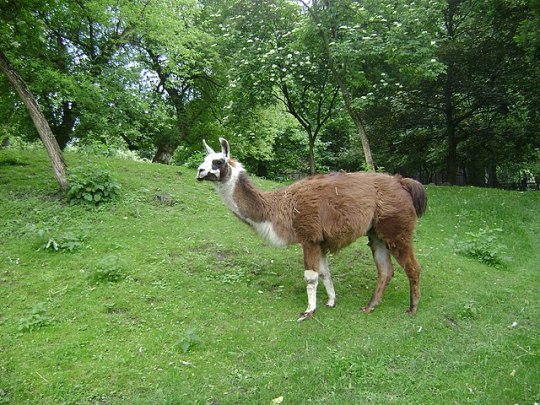
The terms we use to describe various species help us to understand their origin and, perhaps more importantly, their current ecological status. These concepts aren’t just relevant to scientists, however. Everyday people are constantly making decisions that can affect the ecosystems around them, and often these decisions are made without having a full understanding of their impact.
For example, look at how many people release unwanted pets into the wild, whether domesticated rabbits, goldfish, snakes, or other, more exotic animals. Some of these unfortunate animals end up dying pretty awful deaths due to starvation, exposure, or predation. But others manage to survive and reproduce, becoming the latest population of non-native–and potentially invasive–species in their ecosystem. This wouldn’t happen if more people understood the impact of non-native species, and how releasing captive animals puts native species at risk.
But it all starts with knowing that there’s a difference, and understanding the terms that explain why that difference exists. So let’s explore some vocabulary that can be used to describe species, whether animal, plant, or otherwise.
Let’s start with domestication, because there often seems to be confusion as to what makes a species domesticated. Domestication is a process that takes many years, often measured in centuries. Humans breed chosen animals for particular traits over a number of generations. As time passes, each subsequent generation becomes more different from the wild species it originated from, and eventually a new, fully domesticated species emerges from this process of artificial selection by humans.
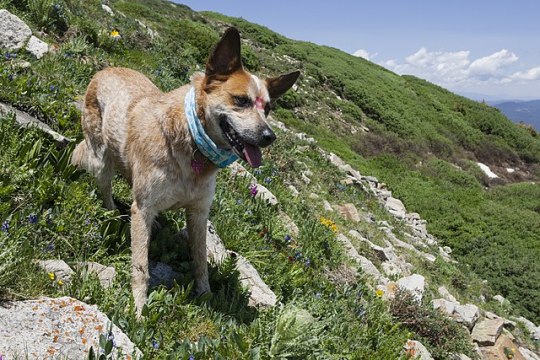
Dogs (Canis familiaris or Canis lupus familiaris) are the first animal humans domesticated in a process that started about 30,000 years ago. They evolved from the now-extinct Pleistocene wolf, a particular lineage of the gray wolf (Canis lupus), and it’s likely that the partnership began as some wolves showed less fear of humans while scavenging from our kills. By 14,000 years ago dogs were a distinct species (or subspecies) from wolves.
Dogs display very different characteristics from wolves. Their faces tend to be shorter with a more pronounced stop (the bump in the forehead where the muzzle meets the rest of the skull.) Floppy ears and curled tails are common, as are patchy-colored coats. Dogs tend to have weaker muscles than wolves of a similar size, shorter legs and smaller feet, smaller teeth, and a smaller size overall. This is a phenomenon known as neoteny, in which domesticated animals have a tendency to retain more juvenile physical traits of their parent wild species, and you can see it in domesticated animals across the board.
But it’s not just physical appearances that matter. Behaviorally dogs are generally more friendly toward humans; in fact, they’ve even developed some human-friendly body language that wolves don’t have, like “puppy dog eyes.” They can be easily trained and, unless poorly socialized, dogs generally enjoy the company of humans.
In many ways, physically and behaviorally, a dog is a wolf that never grew out of its puppy stage. While a young wolf pup may be able to live in someone’s house for a short time, as they grow older they become more destructive and less tolerant of human company. Your dog may love watching out the window during a car ride, but a wolf is going to be much more stressed out by the experience. Even wolf-dog hybrids have to be treated differently than your average domesticated dog because the wolf content has a significant effect on behavior.
This is just one example of how domestication isn’t just a matter of a few generations of selective breeding. You can also compare domesticated horses (Equus ferus caballus) with Przewalski’s horses (Equus ferus przewalskii or Equus przewalskii) or zebras (subgenus Hippotigris), domesticated cows (Bos taurus) with stories of fierce wild aurochs (Bos primigenius), and so forth. In every case the wild and domesticated counterparts are very different in both appearance and behavior.
Now, what about the term “tame”? Many wild animal species have been tamed over the years, either wild-caught individuals or those born in captivity. These tame animals may be more docile in comparison to their fully wild counterparts, but this generally takes a lot of handling and socialization from a young age. Moreover, tame animals retain a lot more wild behaviors than domesticated ones.

Take those supposed “domesticated” foxes that people want to have as pets. Most of the foxes available as pets have no relation to those in the famous Russian fox domestication experiment, but are from modern fur farm lines. And in fact the study foxes came from Russian fur farms, so the researchers were beginning with pre-tamed animals rather than truly wild ones. While some tame foxes may be more amenable to human handling than wild foxes, they are by no means domesticated. They are more prone to wild behaviors like urinating everywhere to mark territory, chewing on anything they can get their jaws on, nipping, and making a LOT of noise. Moreover, whereas dogs adapted to eating an omnivorous diet after millennia of eating alongside us, foxes need a more specialized diet than what you can get at a pet store.
Unfortunately there are unscrupulous people within the exotic pet trade who will advertise their tame (at best) stock as “domesticated.” This often leads consumers to thinking that they’re getting a much more tractable animal that will be as easy to care for as a cat or dog, and sets up everyone involved for disaster (except, of course, the seller with a fatter wallet.)
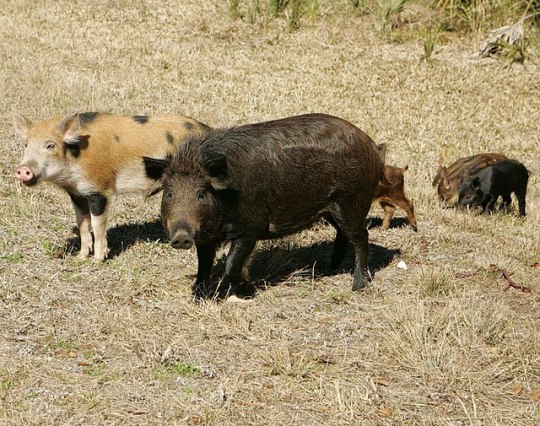
Next, let's compare wild vs. feral. A wild species is one that has never been domesticated, nor have its ancestors. Generally it will be a native species to its ecosystem, though non-native species can also be introduced to an ecosystem without ever having been domesticated. A feral animal, on the other hand, is a member of a domesticated species that has escaped or been released back into the wild and has survived to reproduce new generations that have never been handled by humans.
I’ve often heard people refer to the feral swine (Sus domesticus) that have ravaged ecosystems worldwide as “wild pigs”. They may behave in a wild manner, and they certainly look rougher and hairier than your average well-fed domesticated pig on a farm. It’s not uncommon for feral animals to regain some traits of their wild ancestors. However, that does not make them truly wild.
If you manage to wrest away a litter of newborn piglets from a feral sow and bottle-feed them, they are likely to be able to be socialized and kept in captivity, though they may still physically resemble feral pigs. They haven’t lost the deeply-ingrained genes that carry domesticated traits. However, if you try to raise a newborn Eurasian wild boar (Sus scrofa) or red river hog (Potamochoerus porcus), it will lack the domesticated traits of its farm cousins and show more wild traits as it ages, making it a rather unsuitable pet or farm animal. We also see this return to domestic traits in mustangs and other feral horses captured at a young age. While a mustang born in the wild may be tougher to work with at first than a foal born in captivity and handled from birth, the mustang will be much more calm and easier to train than, say, a zebra.
The problem with referring to feral animals as “wild” is that this suggests they are a natural part of the ecosystem they are in. Because a truly domesticated species (or subspecies) is not the same as the parent species, it has no place to which it is native as a wild animal.

A native species is one that has evolved in a given ecosystem for thousands or even millions of years. In the process it has developed numerous intricate interrelationships with many other species in that ecosystem, creating a careful system of checks and balances. A non-native species is any species that has been taken out of the ecosystem in which it evolved and placed in a different ecosystem where it is not normally found.
For example, here in North America the mourning dove (Zenaida macroura) is a wild native species. While it may resemble domesticated pigeons, it has never been domesticated even when kept in captivity. The Eurasian collared dove (Streptopelia decaocto), on the other hand, was introduced to the Americas after a few dozen individuals were released in the Bahamas in 1974. The feral pigeon (Columba livia domestica) is a domesticated species derived from the rock dove (Columba livia), which is native to Europe, west Asia, and northern Africa. Both the collared dove and pigeon are examples of non-native species. Most non-native species do not offer any benefits to the ecosystems they are introduced to because they do not have established relationships with native species. When they compete with native species for resources, they weaken the ecosystem overall.
Non-native species can be further categorized as naturalized or invasive, or even both. A naturalized species is a non-native one that has managed to establish reproducing populations, rather than going extinct without becoming established. Unfortunately, some people take this to mean that the species has become fully integrated into the new ecosystem. However, this is a process that again takes thousands to millions of years as other species adapt to the newcomer, which itself often also changes as it adapts to its new environment.
Ring-necked pheasants (Phasianus colchicus) are an example of a naturalized species in North America. Native to Asia and parts of Europe, they were introduced here as a game bird 250 years ago. While captive pheasants are regularly released into the wild to offer more hunting opportunities to humans, this species has likely been naturalized from its first introduction.
Again, “naturalized” doesn’t mean “natural”. Pheasants compete with native birds like northern bobwhite (Colinus virginianus) and prairie chickens (Tympanuchus spp.) Not only do they compete for food, nesting sites, and other resources, but they also spread diseases to native birds. Pheasants even engage in brood parasitism, laying their eggs in native birds’ nests and sometimes causing the native birds to abandon the nest and their own young entirely.
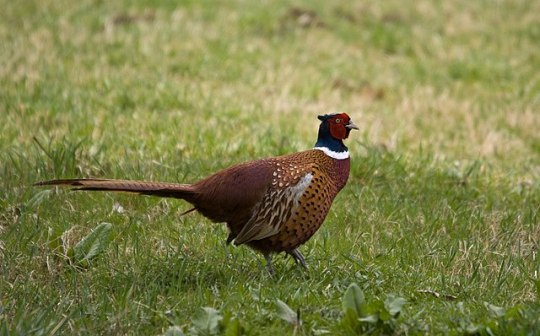
This means that the pheasants are also invasive as well as naturalized. Invasive species are non-natives that aggressively compete with, and sometimes displace or extirpate, native species. There are several hundred species that have become seriously invasive here, including both vertebrate and invertebrate animals, and numerous plants. But even the rest of the over 6000 non-native species that have become naturalized here still put pressure on native species, and have the potential to become invasive if their impact increases to a more damaging point.
Hopefully this gives you a clearer understanding of what these terms mean and why it’s important to know the difference. By knowing a little more about how your local ecosystem works and how different species may be contributing to or detracting from its overall health, you have more power to be able to make decisions that can preserve native species and help ecosystems be more resilient. Given that the removal of invasive species is one of the most important ways we can help ecosystems thrive in spite of climate change, it’s more important than ever that we increase nature literacy among the general populace. Consider this article just one small way to move that effort along.
Did you enjoy this post? Consider taking one of my online foraging and natural history classes or hiring me for a guided nature tour, checking out my other articles, or picking up a paperback or ebook I’ve written! You can even buy me a coffee here!
#wildlife#animals#nature#biology#science#scicomm#invasive species#wild animals#domesticated fox#feral hogs#long post#vocabulary#ecology#educational#biodiversity#conservation#environment#environmentalism#climate change#pigeons
2K notes
·
View notes
Text
ARGONUS MYTHOS: the foxes, the crow and the man
(NOTE: descriptions copy-pasted from DA where i normally/originally post my works. any context that is missing here on tumblr can be found on my DA [linked here and on pinned post] )
[this is actually a continuation of my treehound breeds post. the original deviantart piece has a short folktale to it, but it already was getting long by tumblr standards so i decided to give it's own posts]
__________
[........]since the original post contained a story (dubbed "the foxes, the crow and the man"), i guess i could expand upon that story as well:
a long, long time ago, there existed a family of grey foxes: a mother, a father, and their three kits. food was plentiful, water was clean, and the woods was thriving. all was good, until one particular winter day.
a wildfire had started. the woodland was on fire, as what few animals that stay during winter fled to escape. many did not make it out alive, and many would perish, leaving nothing but charred bones and ashes. the foxes got lucky; their den was deep, and it protected them from the flames and smoke. when they emerged, the woodlands that once provided them with all they needed was now nothing more than a ashened wasteland. and because it takes such a long time for woodlands to heal from such a natural disaster, they had no choice but to leave the place they once called "home".
for seven days, they searched for a new place. however, it seemed like the wastelands stretched for what seemed like forever. every animal that even managed to survive saw the predators coming from miles, and would run away before they could even sneak up on them. the only thing that seemed to keep them alive was the river that they followed; knowing that the running water would at least quench whatever thirst they had.
it wasn't until one day that the mother and father were out hunting, when she spotted a crow. it was the mother that, somehow, managed to catch the crow and was about to kill it. however, instead of pleading for their life, the crow told them that he knew their situation, but if they spared him he could show them a place where there was food. this seemed to stall the two just enough for the corvid to explain.
as it turns out, like most of the animals they tried catching, the crow saw them before they saw him. however, unlike most who ran away, he knew that he could help them, as he too was in their same situation ever since the fires have destroyed his home. however, during his travels to find food and shelter, he found that over the mountains was a valley, containing woodlands that remained untouched by the fires.
inside this last healthy piece of woodlands, there was what initially looked like a camp. a small "village", with small, hairless creatures no bigger than he was. these creatures had been a food source for many; with their food scraps and the vermin that plagued the place, it was a perfect place to call home, at least just temporarily.
normally, many prey items would lie in order to escape beccome food, but by this point the foxes were so desperate that they spared the crow from becoming food. they made a deal with the crow: the crow would guide them to the village, but under the condition that he'd remain in the jaws of one of the parents so he cant fly away should he be lying. surprisingly, the crow agreed, as he hopped into the jaws of the father.
on the way there, the crow told the fox family about these strange creatures. according to the crow, they seemingly "came from the stars", and they too came to this world looking for a place to call home. these creatures were small enough to ride on the backs of turkeys, farmed rabbits like sheep, ate dandelions and bugs for lunch, and would hunt a single elk to feed an entire village for a whole month. they managed to save miles worth of woodlands, leaving a space for wildlife (and in turn prey) to take refuge while the rest of the woods healed. the crow explained that these creature wielded weapon, but as long as you don't attack them, they wont attack you.
the foxes were still suspicious and skeptical, but they continued to follow the crows direction. the crow told them of the various obstacles that would be in their way; he'd tell them the safer shortcuts, and if there weren't safer shortcuts, he'd tell them the best way to get past the obstacles. all the while, he told them to keep following the river; the river leads to the valley.
eventually, they reached the very mountains with a valley on the other side. and to the foxes shock, there was indeed a valley on the other side, with woodlands and a village right in the middle. the crow was finally released from the father's jaws, as they followed the crow to the village.
of course it still was winter, so the valley had yet to turn green with grass and leaves. however, even as they drew closer to the village, they could smell the food. eventually, however, they reached the village. as they begin to finally set up a den near a fallen log, the crow flew off into the village and brought back table scraps. it might not have been the tastiest, but having been struggling to find food for weeks on end during winter, they were more than grateful for some kind of nourishment.
for a while, the followed the crow's rules when it came to hunting within the village; hunt at night, only eat vermin and food scraps, and don't attack the creatures and the animals they kept. however, as winter turned to spring, and springs to summer, something special began to happen.
the creatures began to feed the foxes themselves. it started when the mother was tossed af piece of jackrabbit, to which she cautiously took. however, as another family of grey foxes entered the village to set out home, these "humans" would continue to feed the foxes. eventually, however, the foxes had gotten used to being fed by them. even as the spring and summer ruled around, many of the foxes continued to be fed by the human since it was almost a guaranteed food source.
and eventually, they began to befriend the humans. they would end up working with and protecting each other; foxes would herd rabbits, hunt game, and keep their new owners safe from "smaller" predators. in turn, the humans would take care of them, play with them, and keep them safe from the larger predators.
and yeah, that's the folktale on how gray foxes became treehounds. didn't expect it to go on for that long, but then again i have way too much time on my hands, so why not...
#planet argonus#argonus#domesticated#domestication#folktale#fox#gray fox#grey fox#pet#pug#retriever#pet fox#domestic fox
0 notes
Video
youtube
The Silver fox is swimming in the river 🦈🦊🌊 @DenisKorza #fox #swimming #river #beach
A typical hot day for humans is sizzling for a black fox in silver fur. A short swim and relaxation on the shore, was very welcome!
📌 How to determine the optimal length of a fox's swim?
Very simple! There is a special float indicator for that - the tail! If the tail floats on the surface of the water - swimming training can be continued.
Once the tail is submerged, you can get ready to finish the swim ✅
⚠️ The Silver Fox (aka Melanistic fox, or Black fox, or Silver-black fox, or Vulpes vulpes in Latin) is the RAREST FOX in the world, listed on the International Union for Conservation of Nature Red List as an ENDANGERED species ⚠️
In the wild, the Silver foxes is very rare, as the melanistic population in relation to Red Foxes is only 10%., and this 10% is subject to extermination by non-civilized people who take the lives of animals for entertainment and profit.
📢 Please share this important information about special foxes and it will help keep them alive! 💚
Learn more about FOX colors 🦊 https://youtu.be/zUAstboD_QU
For business inquiries: [email protected]
▶️ TALKING SILVER FOX playlist https://youtube.com/playlist?list=PLFfYXAEfRVMNjmS6mCcmqGlcLz6a83gR6
Talking fox adapted to alien habitat 👽 https://youtu.be/4-OtcZgNziw
Fox buries the Marmots' burrows 🐿️ https://youtu.be/9raRgrM8Ok0
Sly fox does Power hiking 🐺 https://youtu.be/WfEo-Slyf4k
The Sweet Dreams of the most rare Fox ✨ https://youtu.be/z7ehQCWtww0
▶️ POSITIVE LIFE ACTIVITY playlist https://youtube.com/playlist?list=PLFfYXAEfRVMPAuCvOrkSE8LZAtflk7LRX
A man who runs in the fields 🏃 https://youtu.be/1VJ52zbxzEY
Sands of the Golden Spit 🏖 https://youtu.be/mOKr4-tbxwQ
Airborne Special Forces Day 🪂 https://youtu.be/KSPqRukLJys
Moto trip to the pine forest 🌲 https://youtu.be/2wa__wn1iYc
A man who loves snakes 🐍 https://youtu.be/r9Y6CzBIEww
▶️ ROFL playlist 🤣 https://www.youtube.com/playlist?list=PLFfYXAEfRVMNvhXZ6i1UQLTaH2PruH01e
Great compilation of funny moments 🦄 https://youtu.be/cpbM3o0CMCw
When you dry hands on a river bungee 🕺 https://youtube.com/shorts/i-Uo-uaeawU
When you don't really like snakes 🐍 https://youtube.com/shorts/2nBkl50VkxM
The Tale of the Fox 🦊 https://youtube.com/shorts/I4i5XQ9kX1Y
▶️ MOTORCYCLES playlist 🏍 https://youtube.com/playlist?list=PLFfYXAEfRVMMMHdFzxtnVv7Jv0u3uTBdN
Unboxing the best sportbike Suzuki GSX-R 600 K9 🔥 https://youtu.be/rFtIB7d4iuk
Bringing the Gixxer inside ❄️ https://youtu.be/EnU_5BSdaws
Story of my Suzuki GSX-R dream ✨ https://youtu.be/UaPneK9MJPk
▶️ SERVICE & MODIFICATION OF MOTORCYCLES ⚙ https://www.youtube.com/playlist?list=PLFfYXAEfRVMMkgHyyPKbaMZLqeOGVETjy
Service of sportbike Suzuki GSX-R 🔧 https://youtu.be/GGMP33adZ1Q
Valves clearances adjustment on a Suzuki motorcycle 🗜️ https://youtu.be/QihHxbhyKZQ
Maintenance of rear monoshock suspension 📐 https://youtu.be/1BUe-rR1kpI
Cleaning the motorcycle fuel system ⛽ https://youtu.be/yuMw7rzWCy8
Disassembly of Suzuki motorcycle ignition key 🔑 https://youtu.be/5zhUZgSoET4
▶️ TECH & SCIENCE playlist 🦾🧬💻📱 https://www.youtube.com/playlist?list=PLFfYXAEfRVMMzgxXlEBc3KNYd1xBF2z0p
Replacing the LED lamp of the microwave oven 💡 https://youtu.be/DuTJubh-IYo
How to make eMMC DUMP and Flash the Android TV box 📺 https://youtu.be/pqKSvzfO7aU
🖤 YT _ https://www.youtube.com/deniskorza 🔰
💜 IG _ https://www.instagram.com/korzagru
💙 X _ https://twitter.com/korzagru
🤍 Meta _ https://www.facebook.com/korzagru
#youtube#fox#foxes#silver fox#cross fox#black fox#gray fox#white fox#red fox#fennec fox#arctic fox#dark fox#nine tailed fox#kitsune#kurama#akira#inari#domestic fox#pet fox#cute fox#crazy fox#talking fox#fox say#fox swim#sly fox#my fox#brown fox#deniskorza#kiriko#fox vlog
0 notes
Text
Please believe me when I say that King and Sir are absolute nuisances. Everyone hates them so much except for Neil and Andrew. (And Renee)
The cats tricked Neil into bringing them home (based on an ao3 fic called King and Sirs Gotcha Day)
Sir enjoys pretending to be cute to lure you in to pet him, but will take his first chance to attack you.
King will stalk you and attack your feet. You'll never see her coming. (She uses her claws like Andrew uses his knives)
So photogenic you forget forget all the wrong they've ever done
They are the sweetest to Andrew and Neil, even when guests are over. Nicky whines about how unfair this is
Neil doesn't allow them to have people food
It's okay though, they know Andrew will give them people food when Neil's not looking
(Neil totally knows)
Sir wears a bell on his collar so they know where he is
King refuses to wear a collar
She keeps pulling/ biting them off, much to the boys displeasure, and hides them so they can't find it
They eventually gave up on the collar when King started meowing everytime she entered a room with Andrew or Neil so she wouldn't accidently sneak up on them
Aaron and Kaitlyn babysat them for a weekend while Andrew and Neil were at the fall banquet
They proceeded to destroy Aaron's house without getting caught
King will stare Aaron down until he looks at her. She will then proceed to knock over the closest thing to her.
She even locked him outside his apartment once. (He was mildly impressed)
Sir is all cuddly towards Kaitlyn, so Aaron can't punish them
After the weekend Aaron vows to never see the cats again
(Andrew interrogates them on how they did that so he could do it. They meow and Andrew nods back in understanding)
Renee takes care of the cats when the boys are gone
King likes Renee. Sir begrudgingly respects her
Dan was the first to mention how similar King and Sir are to Andrew and Neil respectively.
Silently, this explains a lot to Andrew
#aftg#all for the game#andrew minyard#the foxes#neil josten#aftg headcanon#aftg neil#aftg andrew#andriel#king fluffkins#sir fat cat mccatterson#aaron minyard#nicky hemmick#renee walker#dan wilds#domestic andreil#aftg fluff#post canon
2K notes
·
View notes
Text








Buddie + ao3 tags || 5x14
#911hiatus2023#911edit#buddieedit#buddie#eddie diaz#evan buckley#911#911 fox#911 abc#*mine#buddie ao3 series#PARTNERS! DOMESTICITY! DADS!#also that nightmare scene was so well done
388 notes
·
View notes